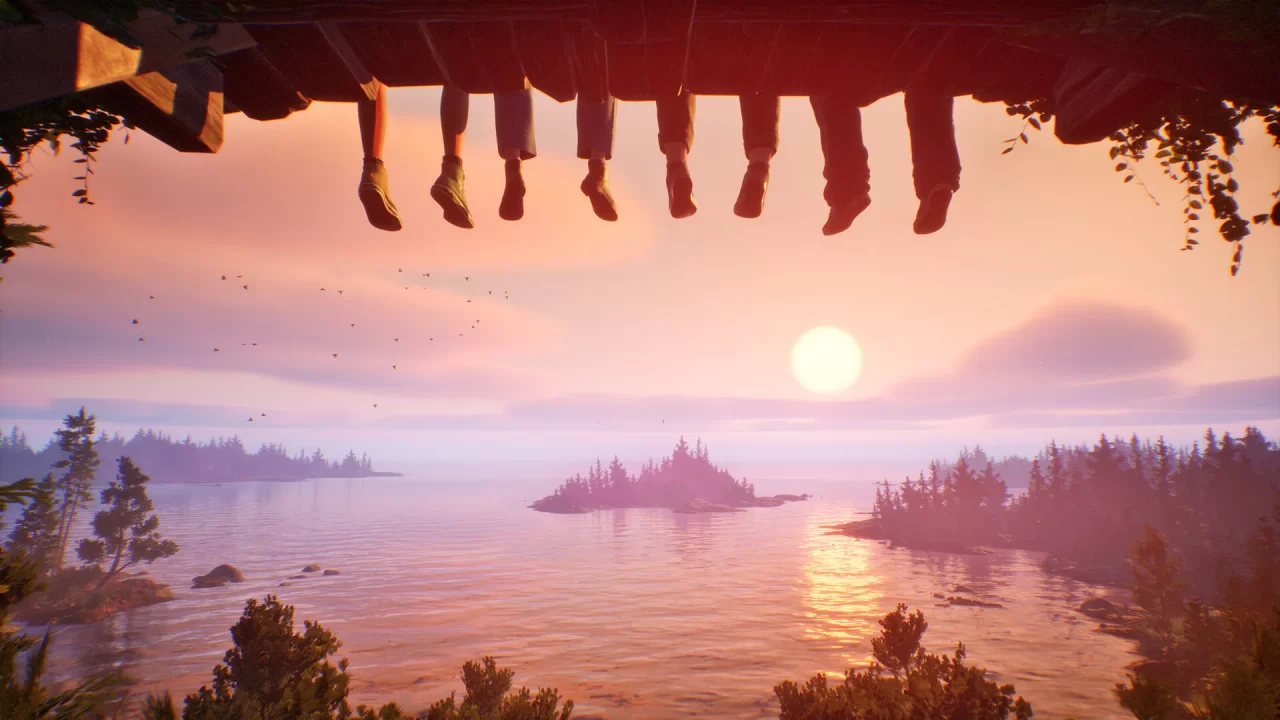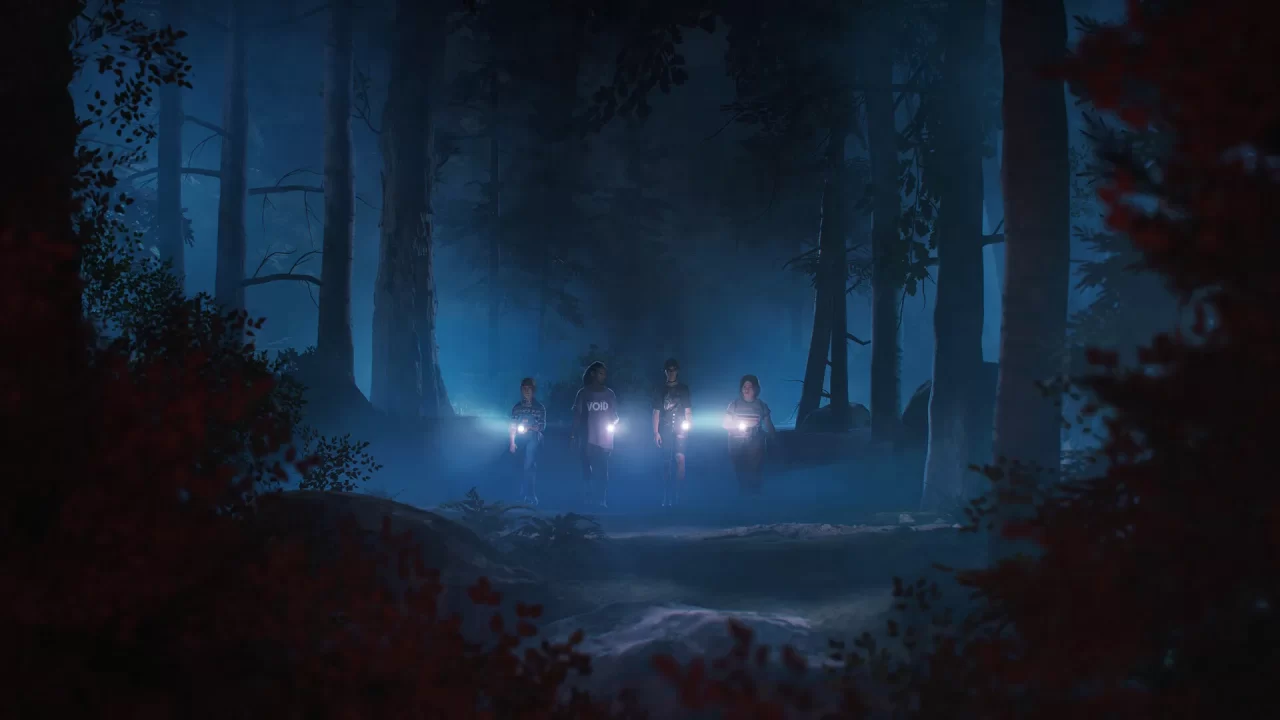From the team behind Life is Strange and Life is Strange 2 comes Lost Records: Bloom & Rage, the first part of a new narrative-driven series. If you’re a fan of DON’T NOD‘s previous work, there’s a good chance you’ll find the story here intriguing enough to stick around. That said, the game is held back by a laundry list of technical issues—bugs, pacing problems, choppy animations, and audio mishaps—that make it feel like it’s not quite living up to its potential.
Lost Records jumps between two timelines: 1995 and 2022, both set in the small Michigan town of Velvet Cove. You play as Swann, an awkward, introverted teen who forms a tight bond with three other girls during a life-changing summer. There’s also Autumn, the practical one who keeps everyone grounded; Nora, the free-spirited dreamer; and Kat, the tough but unpredictable wildcard.
Their friendship feels genuine, and I found myself invested in their dynamic. Fast forward 27 years, and the group gets pulled back together when a mysterious package shows up at Autumn’s mom’s house, covered in strange symbols and the words Bloom & Rage. The friends meet up at a local bar to open it, and that’s when things start to unravel.
The story shifts back and forth between time periods, with present-day Swann and Autumn trying to piece together what went down all those years ago. Although the mystery is intriguing, I couldn’t ignore some glaring plot holes. For example, if what happened in 1995 was so bad that they all drifted apart, why does it seem like no one remembers the event? I’m not sure if this will get cleared up in Part 2, but for now, it feels less like a clever storytelling choice and more like a way to drag the game out. It messes with the pacing, and there were moments where I just felt… impatient.
And that brings me to the next issue: Lost Records’ episodic release format. While this worked in 2015 when the first Life is Strange released, I find this approach extremely outdated in today’s industry. Splitting the game into two parts effectively guarantees the first will end in a cliffhanger, which makes the game far too reliant on the second part to pick up the slack. As a result, it is difficult to review the game, because I am essentially judging an unfinished story.
I had serious issues with Life is Strange: Double Exposure, but at least the developers made the right call by releasing a complete game upfront. If you are also skeptical about the episodic format, I recommend waiting until the second part is released.
On a more positive note, the 1995 timeline is where Lost Records truly shines. The relationships between the four girls are so well-written, and their banter feels natural and relatable. I loved how the game rewarded me for paying attention to their personalities—little dialogue choices and moments that made me feel like I was part of the group. That said, the dialogue can get a bit cheesy at times, and some side characters act in extremely strange and uncharacteristic ways. Their behavior shifts without much explanation, taking me out of the story. Considering the story is only about eight hours, these issues stand out far more than they may in a longer game.
To illustrate my point with the side characters, take Swann’s mother. In the 2022 timeline, Swann talks to her mother on the phone, giving us a glimpse into their relationship. It is obvious that they care about each other, but there’s little mutual understanding between them. In 1995, we do not hear a single conversation between them backing up this sudden disconnect. As another example, we meet Kat’s sister and her boyfriend early in the 1995 timeline and get a strong, negative impression of who they are as characters. However, later on, there is a complete turnaround in character development, which is jarring. This is a significant issue that persists throughout the entire story.
Visually, the 1995 sections are gorgeous. The colors, the set design, the little details—it all screams ’90s nostalgia. Swann’s room, the video rental store, the local diner—every location feels lived-in and authentic. I could tell the developers put a lot of love into capturing the vibe of a small Michigan town, and it shows.
The horror elements are subtle but effective. The game doesn’t rely on jump scares or overused tropes, which I appreciated. Instead, it’s all about unsettling little details that creep up on you. The camcorder mechanic is a standout feature for me. Swann’s love for filmmaking is woven into the gameplay, and I loved recording key moments, editing footage, and even narrating over my completed “memoirs.” The VHS aesthetic is spot-on, and it adds so much to the atmosphere.
Like the first Life is Strange, the soundtrack is another high point for Lost Records. Whether it’s the car radio in 2022 or a boombox in 1995, the music fits perfectly. However, the audio design has some serious issues. During cutscenes, overlapping sounds, like a radio ad playing over dialogue, can be extremely distracting. There was this one moment where a song from 1995 didn’t entirely fade out, and it just lingered awkwardly in the background during a heavily emotional scene. It completely killed the mood for me.
Graphically, the game looks great. The bright, saturated colors of 1995 contrast nicely with the muted tones of 2022, helping set the tone for each timeline. Unfortunately, the animations are a completely different story. Characters reset awkwardly during scene transitions, lip-syncing is often off, and there were moments where it looked like someone was holding an object… except the object wasn’t there. Those little things add up and make Lost Records feel unfinished in more ways than just the narrative.
Lost Records: Bloom & Rage has a lot going for it—a compelling mystery, a strong cast of characters, and a nostalgic atmosphere that captures the era perfectly. But the technical issues are hard to ignore. From audio glitches to animation bugs, it feels like the game needed more time in the oven. I’m hopeful that Part 2 will smooth out these rough edges, because there is certainly some potential here. It’s just not quite there yet.




